Although Spring Lake has been my go-to place in Santa Rosa as long as I can remember, I always try to visit Bodega Bay at least once on our visit. On this trip, we actually managed to get to parts of the beach three different times.
On our first trip, Leslie and I visited Doran Regional Park and the weather was beautiful – pure sunshine. Plus, we were greeted by several large shorebirds (Willets, Godwits, and Whimbrels) that we haven’t seen in the Pacific Northwest for a while.
We were greeted by a small flock of Willets
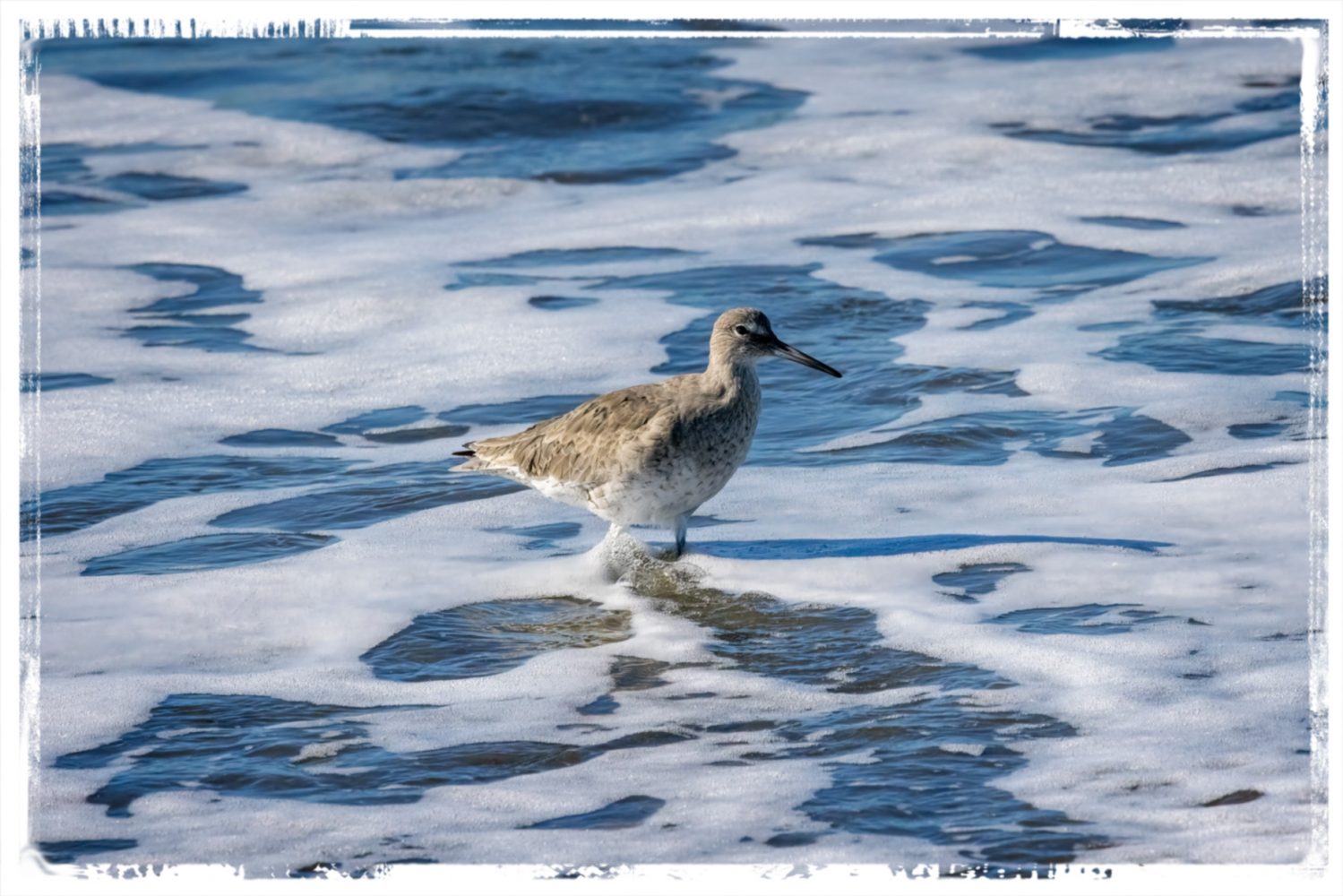
feeding along the shoreline. They generally ignored us as they fed, but occasionally flew up the beach, revealing beautiful wing patterns hidden from sight most of the time.
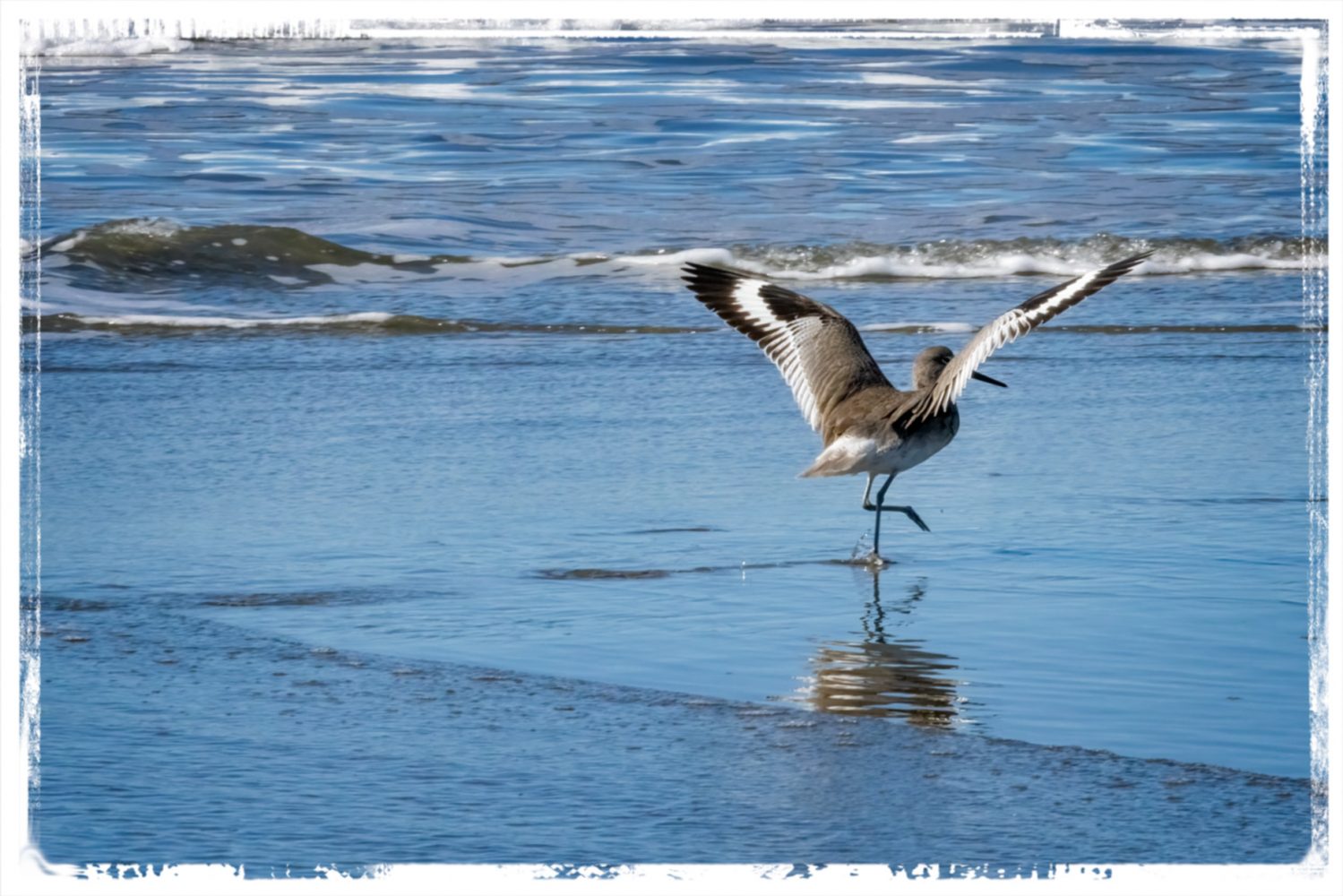
There were also a small number of Marbled Godwits mixed in with the Willets foraging in the surf.
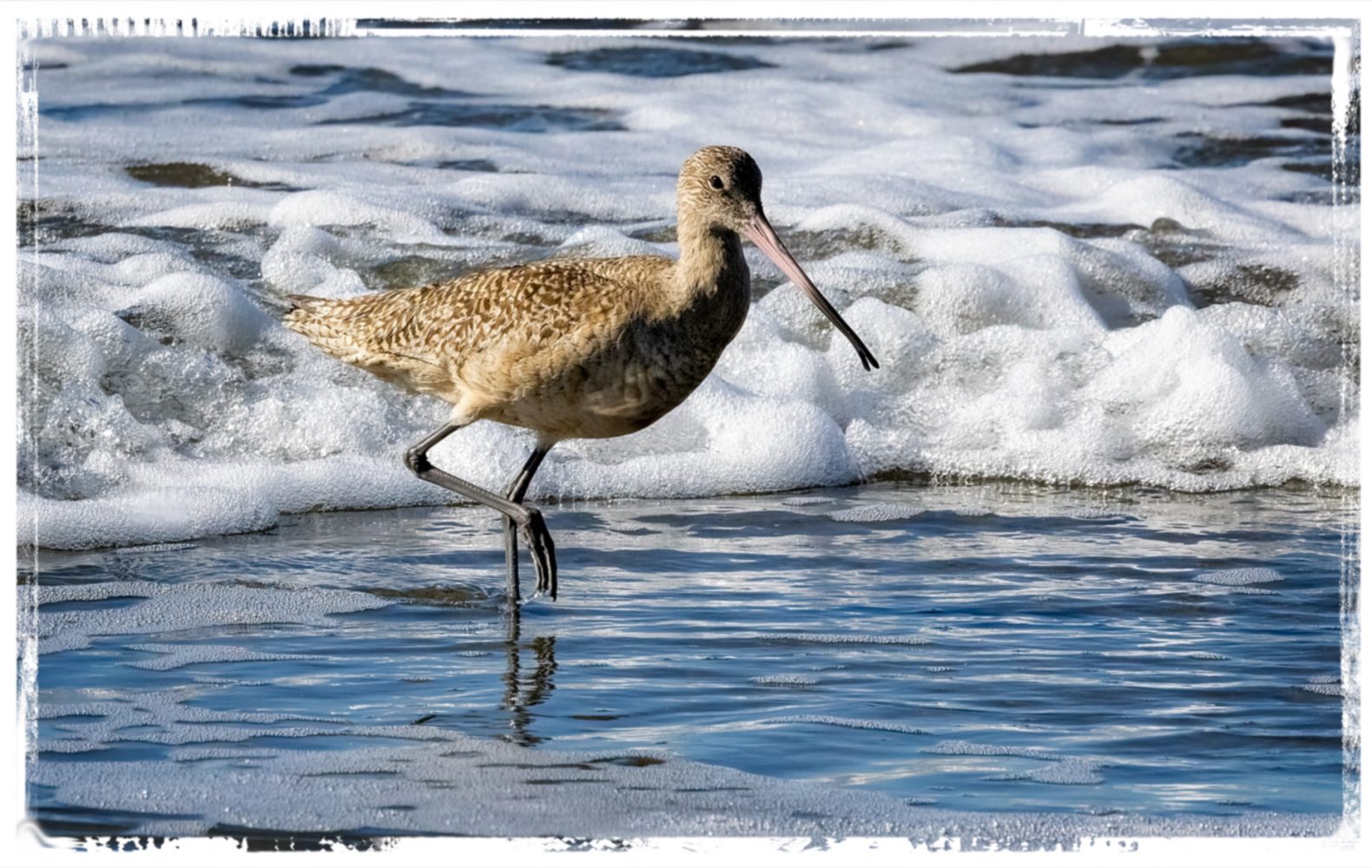
Apparently, Willets and Godwits eat similar foods, but it seems that the Godwit’s longer beak would certainly give it an advantage in deeper water.
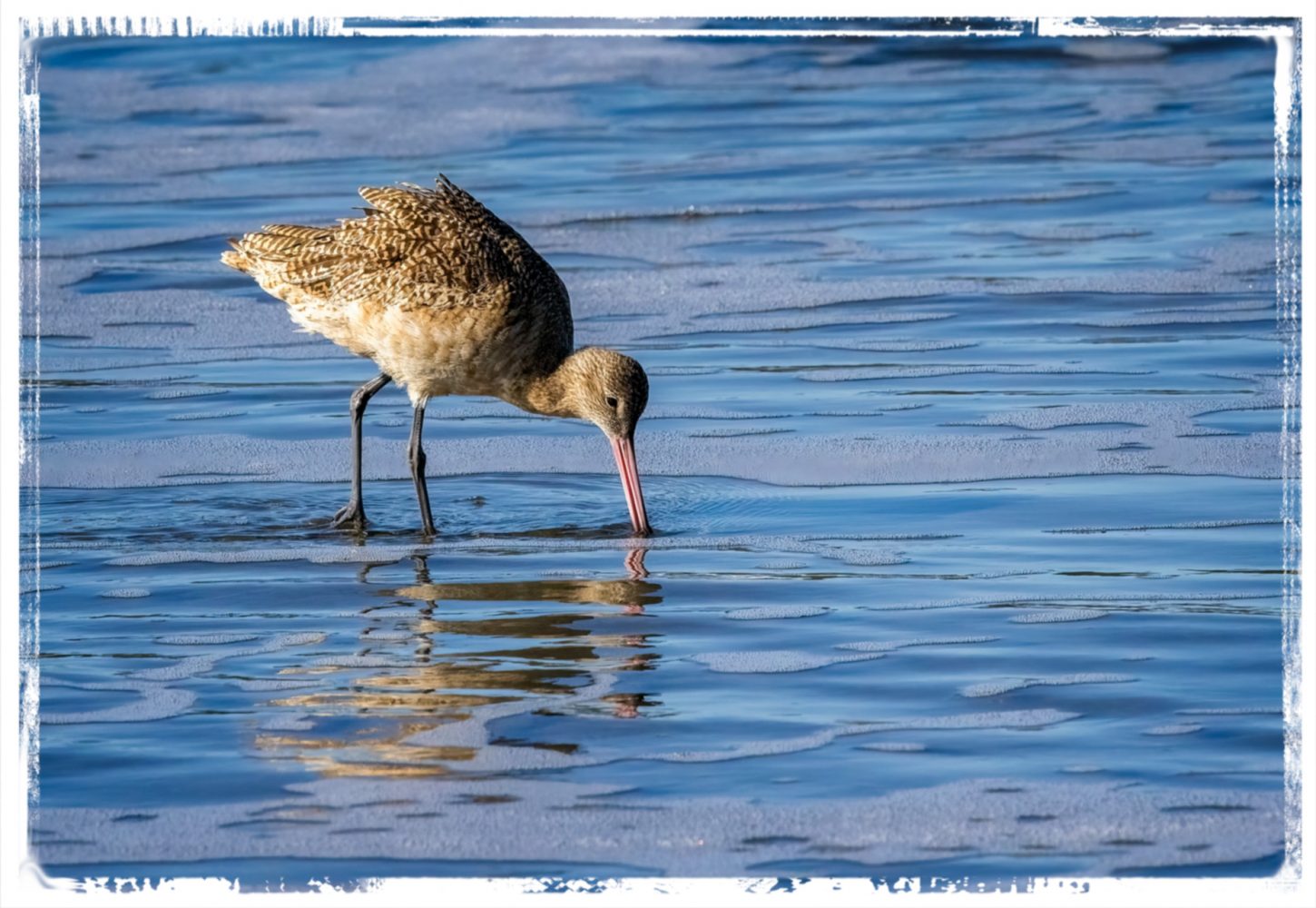
Since I’ve seen Whimbrels in the past when I’ve seen Willets and Godwits, I kept my eyes open for one — and that’s how many I saw. Just one. Luckily, it totally ignored me
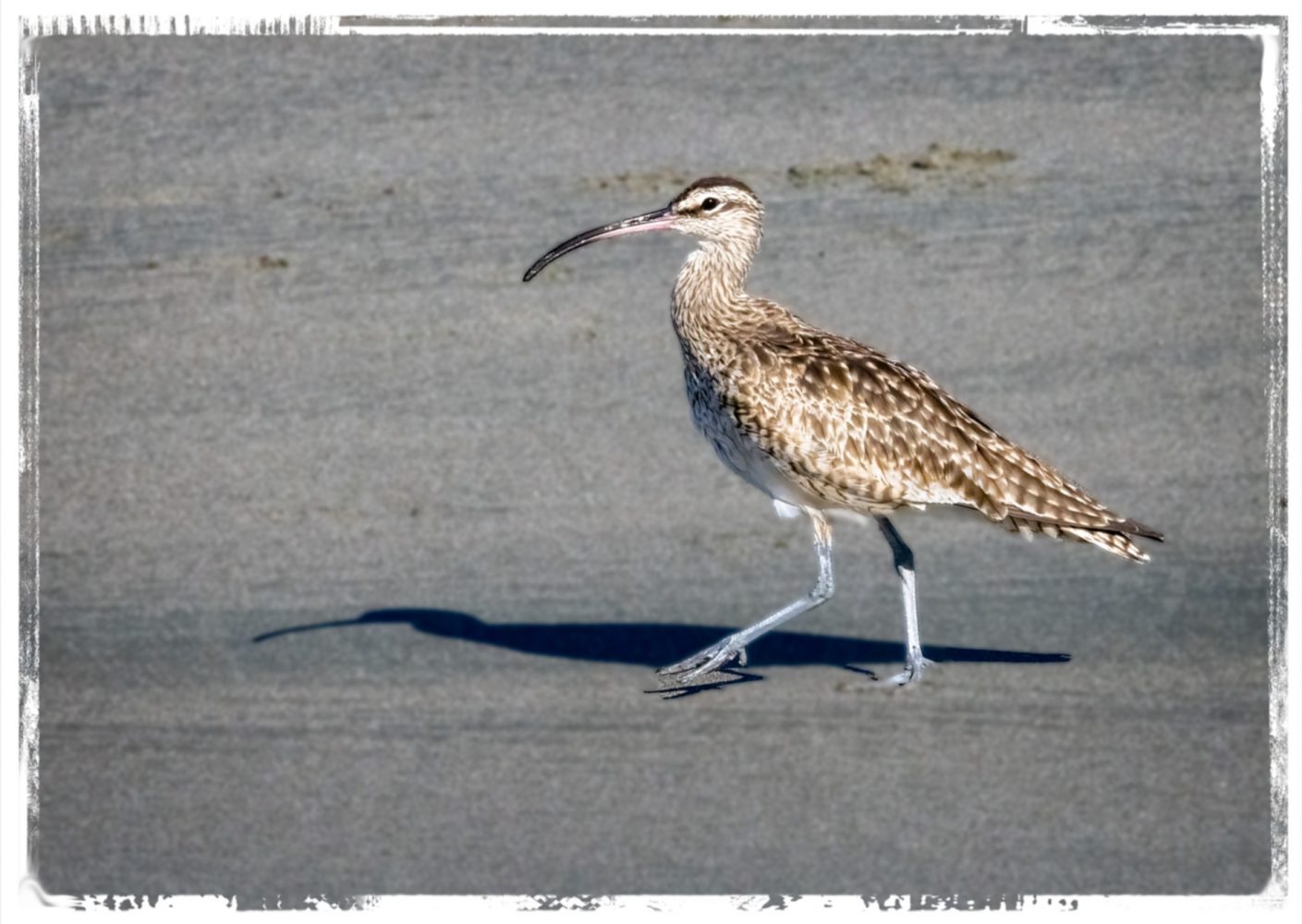
and went about its business of finding a sand crab.
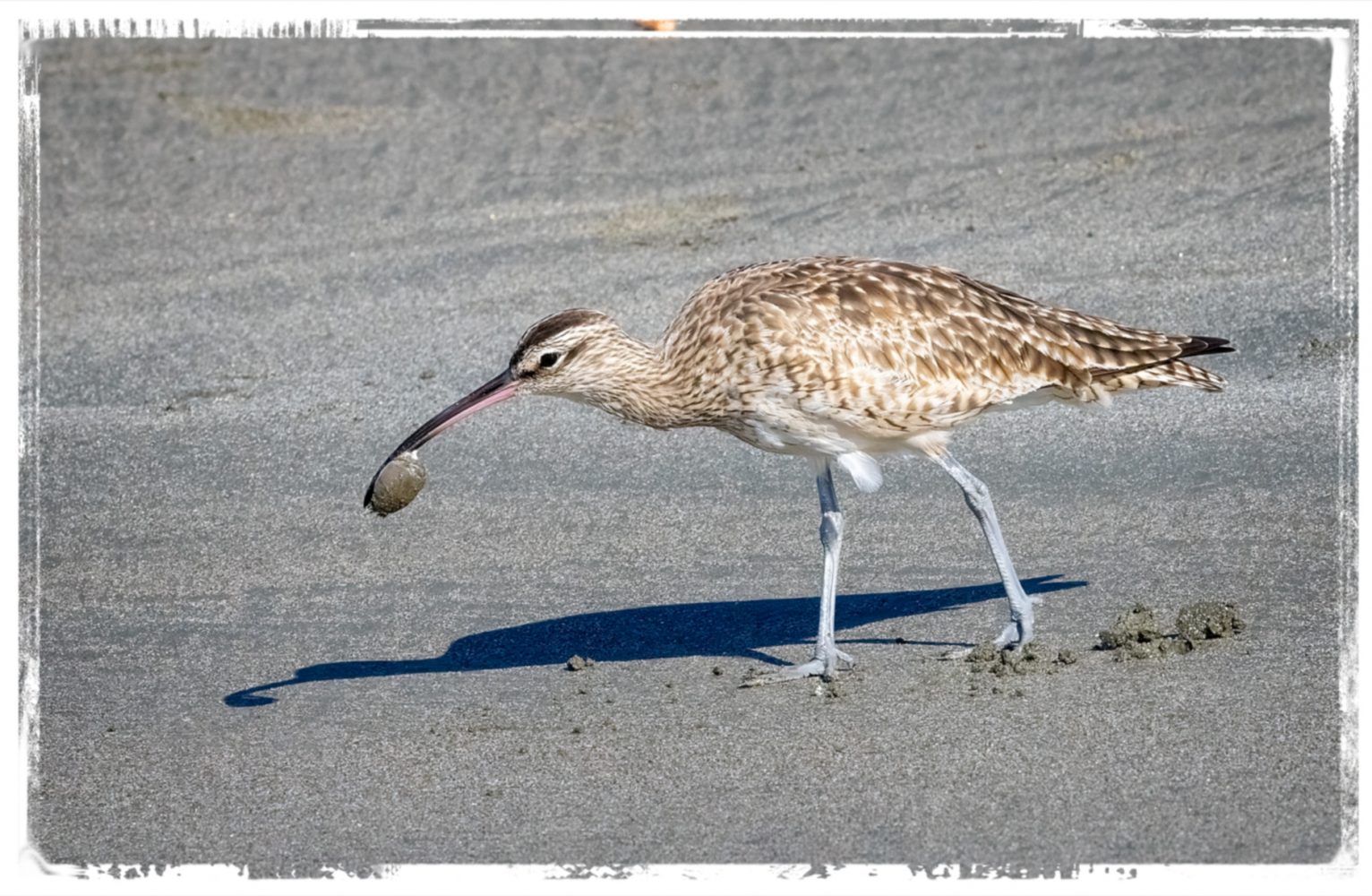
Walking the beach on a sunny morning is always a treat, but it’s even better when you’re accompanied by magnificent birds like this.












